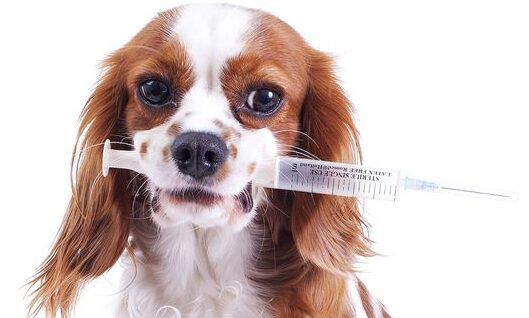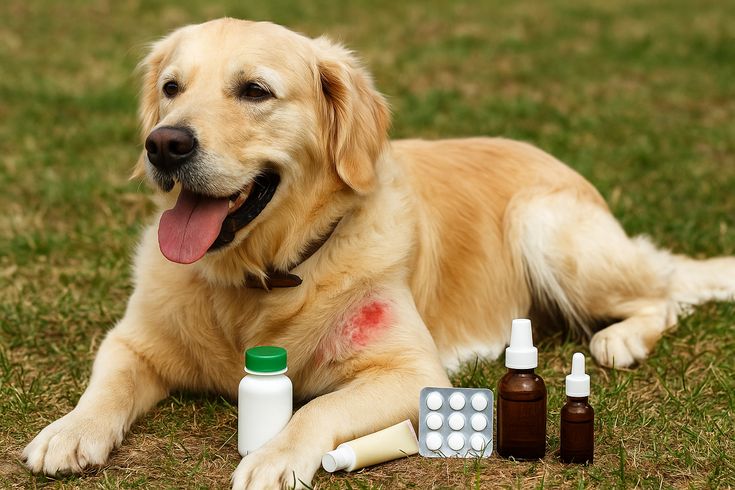How Much Does It Cost to Adopt a Dog– Proven Tips to Save Money
Adopting a dog is one of the most rewarding decisions you can make. Dogs bring joy, companionship, and unconditional love into our lives. But along with wagging tails and playful barks come responsibilities—including financial ones. Before you bring a new pup home, it’s important to understand the real costs involved.
Many people assume that adopting a dog only involves the adoption fee. The truth is, there are ongoing expenses such as food, medical care, grooming, training, and other essentials that add up quickly. At the same time, with a little planning and smart decision-making, you can save money without compromising your dog’s well-being.
After all, the true reward of adoption isn’t measured in dollars—it’s measured in tail wags, paw prints, and the bond you share with your furry best friend. While many people ask How Much Does It Cost to Adopt a Dog, the real value goes far beyond money—it’s about love, companionship, and a lifelong friendship.”
1. Why Adoption Is Better Than Buying
Before diving into costs, let’s touch on why adoption is such an important choice.
- Giving a Second Chance: Every year, countless dogs find themselves in shelters waiting for a loving home. By adopting, you’re giving one of them a second chance.
- Lower Initial Fees: Adoption is usually far more affordable than buying from breeders or pet stores.
- Medical Care Included: Many shelters cover spay/neuter, vaccinations, and microchipping in the adoption fee.
- Fighting Puppy Mills: Adoption reduces demand for unethical breeding practices.
Not only do you get a loyal companion, but you also make an ethical and financially smart decision.

2. The Initial Costs of Dog Adoption
Adopting a dog comes with certain upfront costs you’ll need to plan for:
Adoption Fees
Most shelters ask for an adoption fee to help cover vaccinations, medical care, and daily upkeep, usually ranging within a set amount. These can range:
- $50–$300 for mixed breeds or older dogs
- $300–$600+ for puppies or purebred dogs
Basic Supplies
Your new pup will need essentials right away:
- Food and Water Bowls: $15–$40
- Leash and Collar: $20–$50
- ID Tags & Microchip Registration: $15–$30
- Dog Bed or Crate: $50–$200
- Starter Food Supply: $40–$80
Initial Veterinary Care
Even if your adoption fee covers some vet services, additional expenses may pop up:
- Wellness Exam: $50–$100
- Flea/Tick and Heartworm Prevention: $20–$50 monthly
- Extra Vaccinations (if not covered): $20–$40 each
When added together, the initial adoption costs often reach $500–$1000 within the first month.
3. Breaking It Down – How Much Does It Cost to Adopt a Dog Over the First Year?
After the initial adoption, the first year is usually the most expensive. Here’s what you should expect:
- Food: $400–$700 depending on size and breed
- Vet Visits & Preventive Care: $300–$600
- Training & Socialization: $100–$500
- Grooming (if needed): $200–$500
- Toys & Enrichment: $100–$300
- Pet Insurance: $300–$600
On average, first-year costs range between $1200 and $3000 depending on your dog’s needs and your lifestyle.
4. Ongoing Annual Expenses
Once you get past the first year, ongoing costs become more predictable:
- Food: $400–$800 yearly
- Routine Vet Care: $200–$400
- Vaccinations & Boosters: $100–$200
- Preventive Medication: $300–$600
- Grooming (breed-dependent): $200–$600
- Toys, Treats & Accessories: $150–$300
This means that the average annual cost of dog ownership is between $1000 and $2500 per year.

5. Hidden and Unexpected Costs
Pet ownership always comes with surprises. Here are some you should budget for:
- Emergency Vet Visits: Can range from $200 to $5000 depending on severity
- Surgery or Chronic Conditions: Thousands of dollars if uninsured
- Pet Boarding or Sitting: $30–$100 per day
- Property Damage: Chewed furniture, torn shoes, scratched floors
- Licensing Fees: $10–$50 annually depending on your area
Planning ahead for surprise expenses is an important part of being a responsible dog owner.
6. Smart Budgeting – How Much Does It Cost to Adopt a Dog Without Overspending?
Now that we’ve covered the numbers, let’s talk about practical strategies to save money while still giving your dog the best care.
1. Choose the Right Adoption Source
Shelters often have lower fees than breed-specific rescues. Some even run adoption drives with waived or reduced fees.
2. Consider the Dog’s Age
Puppies are adorable but come with higher medical and training costs. Older dogs are often cheaper to adopt and may already be trained.
3. Compare Food Options
High-quality food doesn’t always mean the most expensive. Ask your vet for affordable but healthy recommendations.
4. Preventive Care Saves Money
Regular check-ups and vaccinations are cheaper than treating major illnesses later.
5. DIY Grooming
Learning to brush, bathe, and trim your dog’s nails at home can save hundreds annually.
6. Use Pet Insurance Wisely
Insurance may seem like an extra cost, but it can save you thousands in emergencies. Compare policies carefully.
7. Buy in Bulk
Purchasing food, toys, and supplies in larger quantities reduces long-term costs.
8. Look for Community Resources
Some shelters and nonprofits offer low-cost vaccinations, spay/neuter clinics, or even free food banks for pet owners.
Comparing Adoption vs. Buying From a Breeder
Factor Adoption Cost Breeder Cost
Upfront Fee $50–$600 $1000–$5000+
Medical Care Often Included Extra
Variety Mixed & Purebred Mostly Purebred
Ethical Impact Saves Lives Risk of Puppy Mills
Adoption clearly comes out on top, both financially and ethically.
7. Training and Behavior Costs
Many new dog owners overlook training, but it’s essential. A properly trained dog is more manageable, less destructive, and far more content.
- Group Classes: $100–$300
- Private Training: $50–$150 per session
- Online Training Programs: $50–$200
Investing in training early often saves money in the long run by preventing damage and behavioral issues.

8. Lifestyle Choices That Affect Dog Ownership Costs
Your personal lifestyle also plays a big role:
- Travel often? If you travel often, expect to spend extra on pet sitters or boarding services.
- Big backyard? Less need for daily dog walking services.
- Work from home? You save on daycare but need to spend time exercising your dog.
Choosing a dog that fits your lifestyle helps avoid unnecessary expenses.
9. Real Stories – Pet Owners on How Much Does It Cost to Adopt a Dog
To put things into perspective, let’s hear from real owners:
- Anna, NYC: Adopted a Labrador mix. First-year cost was nearly $3500 due to city prices and frequent vet visits.
- Ravi, Suburbs: Adopted a senior Beagle. Paid $150 adoption fee, with first-year expenses of only $1200.
- Sophie, Student: Adopted a rescue puppy. Though the fee was waived, she spent $2000 in the first year on training and supplies.
These stories show how costs can vary widely depending on location, lifestyle, and the dog’s age.
10. Long-Term Financial Planning for Your Dog
Owning a dog involves more than just covering annual costs—it’s a lifelong financial responsibility. Most dogs live between 10 and 15 years, and during that time you could spend anywhere from $15,000 to $40,000 depending on breed, health, and lifestyle choices. Planning ahead ensures you can provide for your pet throughout their lifetime.
Some key financial planning tips include:
- Emergency Savings: Keep at least $1000–$2000 set aside specifically for pet emergencies.
- Insurance vs. Planning ahead: Consider whether pet insurance or setting aside money in a special savings account is the smarter choice for your situation.
- Senior Care: As dogs age, costs often rise due to health conditions. Budget more as your dog enters senior years.
11. Ways to Save on Dog Care Without Compromising Quality
If you’re worried about costs, here are some extra strategies:
- Adopt During Promotions: Many shelters run “clear the shelter” events with waived fees.
- Use Loyalty Programs: Pet stores often have rewards programs that save you money over time.
- Secondhand Supplies: Gently used crates, toys, and beds can often be found at thrift shops or online marketplaces.
- Homemade Treats: Making dog treats at home is usually cheaper and healthier than store-bought.
- Barter Services: Exchange pet sitting with a neighbor or friend instead of paying boarding fees.
12. Questions to Ask Before Adopting a Dog
To make sure you’re financially ready, ask yourself:
- Do I have a stable income to cover recurring costs?
- Am I prepared for emergency vet bills?
- Does my lifestyle allow time for training, exercise, and companionship?
- Can I commit to 10+ years of care and expenses?
Answering honestly will help you avoid financial stress down the road.
13. Final Thoughts
Adopting a dog is both a joyful and serious commitment. Many new pet parents often wonder: How Much Does It Cost to Adopt a Dog – Proven Tips to Save Money can make the process less overwhelming. From adoption fees to long-term care, understanding these expenses upfront helps you plan responsibly. Every cost is worth it when you see the happiness in your dog’s eyes.
By budgeting smartly, using preventive care, and tapping into community resources, you can keep costs manageable while giving your dog a loving, healthy life.
After all, the true reward of adoption isn’t measured in dollars—it’s measured in tail wags, paw prints, and the bond you share with your furry best friend.
FAQs
1. What is the cheapest way to adopt a dog?
Look for local shelters or adoption events that waive or reduce fees. Older dogs often have lower costs than puppies.
2. Does pet insurance really save money?
Yes. It may not reduce everyday costs, but it protects you from massive emergency bills.
3. Is adopting a dog cheaper than buying?
Absolutely. Adoption fees are a fraction of breeder prices and usually include medical care.
4. Can I adopt a dog if I’m on a tight budget?
Yes, but plan carefully. Choose a low-maintenance breed, use community resources, and budget for basic needs.
5. How much should I budget monthly for a dog?
On average, $100–$200 per month covers food, vet care, and basic supplies.
6. How much does it cost to adopt a dog?
The cost to adopt a dog can range from $50 to $500, depending on the shelter, breed, and what’s included (vaccinations, spaying/neutering, microchipping). If you’re wondering “How Much Does It Cost to Adopt a Dog – Proven Tips to Save Money”, shelters often provide adoption packages that save you money in the long run.
7. How can I save money when adopting a dog?
You can save by adopting from shelters during discounted adoption events, using community vet clinics, and choosing affordable pet insurance. Guides titled “How Much Does It Cost to Adopt a Dog – Proven Tips to Save Money” often highlight these strategies.
8. Is adopting a dog cheaper than buying one?
Yes. Buying from breeders can cost thousands, while adoption fees are much lower and often include essential care. Searching “How Much Does It Cost to Adopt a Dog – Proven Tips to Save Money” will show why adoption is a budget-friendly choice.
9. Can adopting a senior dog save money?
Absolutely. Senior dogs often have lower adoption fees, and some shelters even waive them. Articles covering “How Much Does It Cost to Adopt a Dog – Proven Tips to Save Money” highlight this as one of the best cost-saving hacks.







